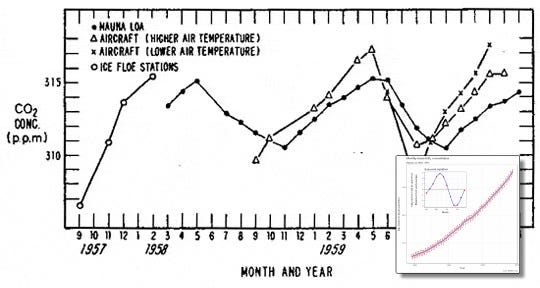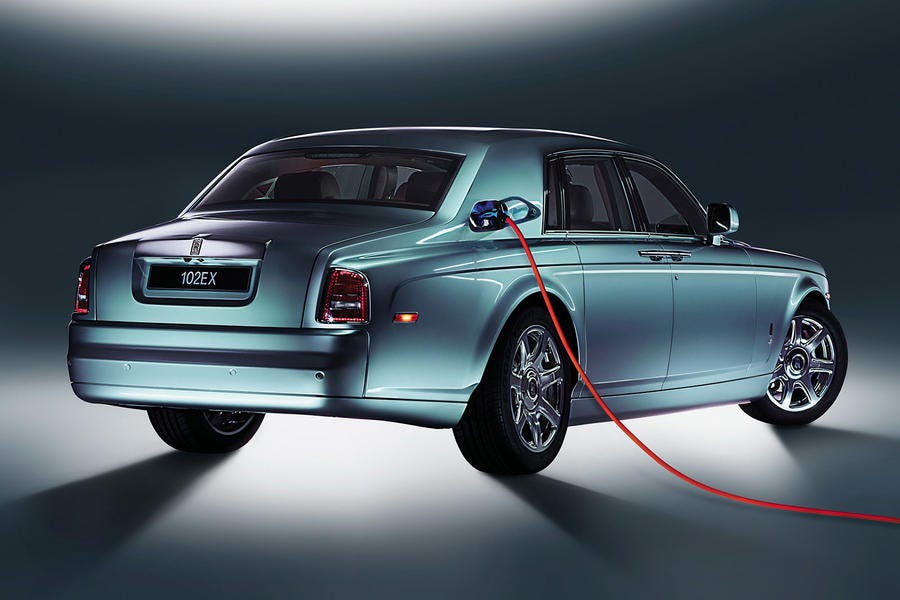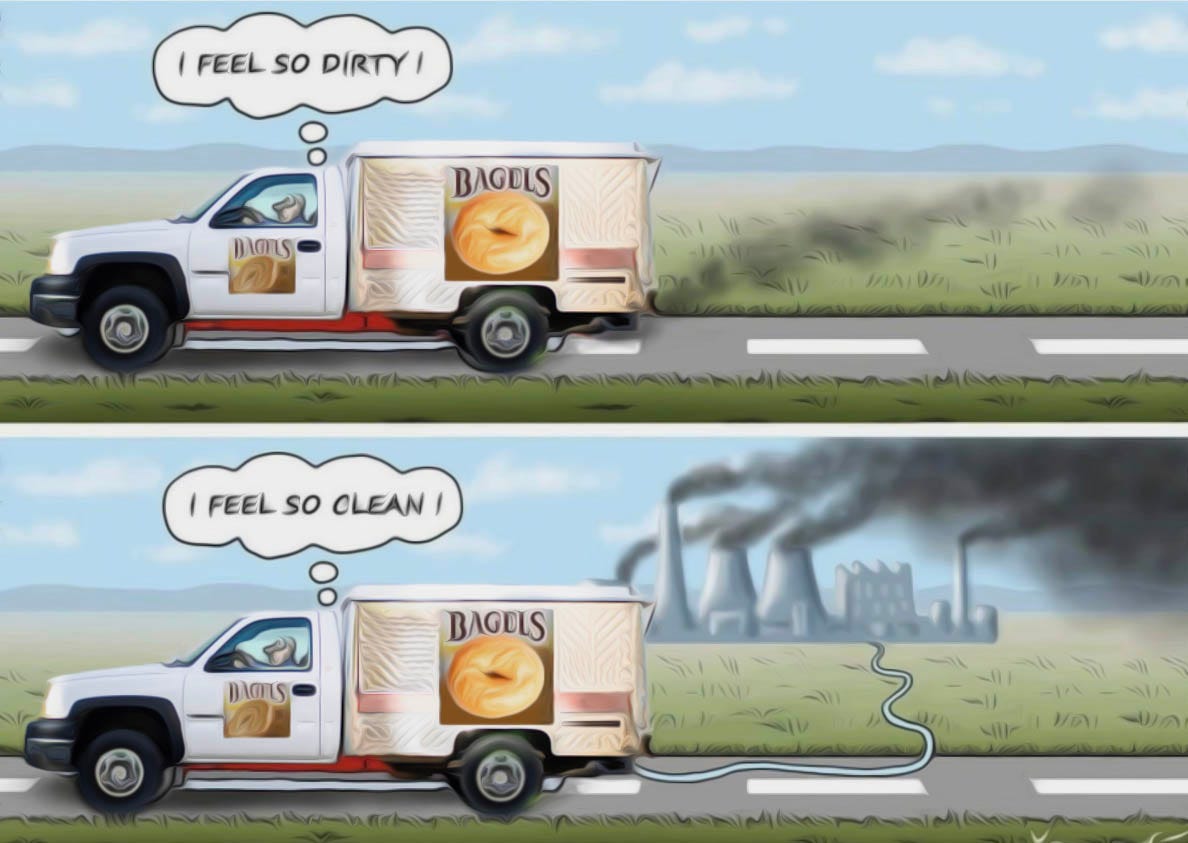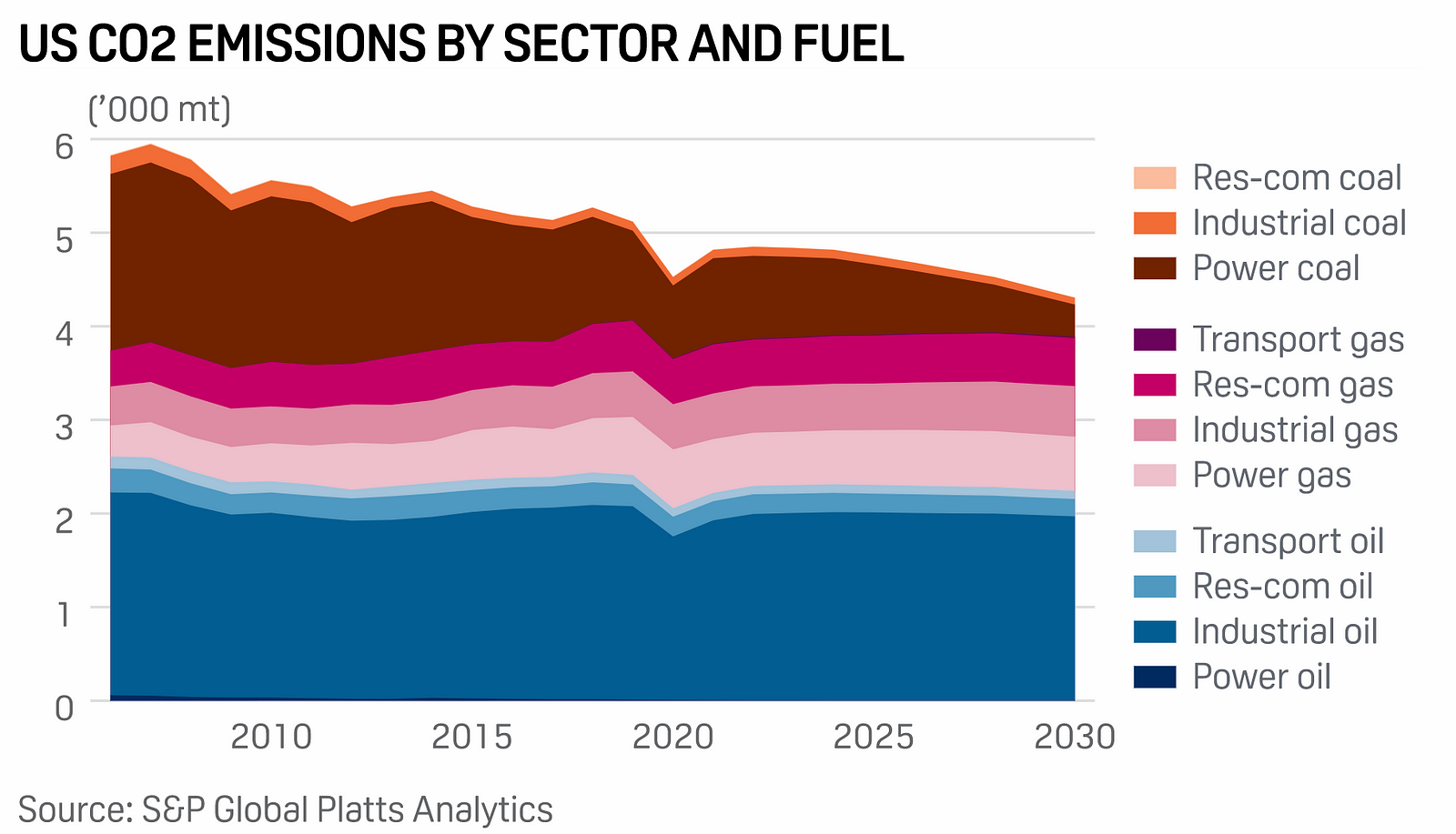The Great Pause Week 65: New Hope Creek Journal, Part Two - Shorting the Future
Last week I left off my story of a young graduate student setting fish traps in a North Carolina stream, weighing the fish he captured, and estimating the oxygen use by the fish and also the ecosystems in which they lived, and concluding that sunlight would not be enough to pay for the consumer culture of the fish in New Hope Creek. … and maybe not for the greater consumer culture that humans have become accustomed to.
Charles Hall said from that moment he first inventoried New Hope Creek he knew what his life was going to be. From his dissertation onward, through his years as a professor, researcher, visiting lecturer, and award-winning scholar, editing, authoring and co-authoring innumerable original papers and books, his name is associated with EROI — Energy Return On Investment.
Economics is the study of the allocation of scarce resources among competing ends.
In a talk with friends as he hiked through Duke Forest, where his research stream is located, he said:
You’re probably pretty used to doing things in terms of money and so forth. But money by itself doesn’t have value. You can burn paper money and heat your lunch, but that’s not very valuable. I mean, it used to be silver would have some genuine value, and you can use gold in a computer or to fill your teeth, etc. But what was really important is that energy has value because money is a lien on energy. In other words society will give you, makes a promise to you, that it will use about five megajoules of energy — which is half a coffee cup of oil — to generate the good or service you want to trade one dollar for.
Let me give you an example: if you buy a bagel in Chapel Hill it doesn’t appear just by magic. What probably happened is something like this: the basic materials of a bagel are mostly carbon and roughly 7 to 14% nitrogen. While any green plant can use CO2 from the air, they cannot get nitrogen. This is a problem for plants and hence us, as plant (and animal) proteins are made largely of nitrogen. In principle, nitrogen should be easy to get, since the atmosphere is 78% nitrogen. But in practice it’s not, because the two atoms of nitrogen are held together very tightly by triple chemical bonds, (N2), that is, it is unavailable to plants because the two atoms are held together very tightly. Before 1908, nitrogen fertilizer was pretty hard to get. It took a lightning bolt or a very special bacterium, or birds would concentrate it in their excrement or guano. This worked, but there was not too much guano relative to the needs of the world’s increasing population.
Then in 1908 a German chemist names Fritz Haber found that if he took a metal tube, filled it with air and hydrogen, then heated it while compressing it with the right catalyst, he could split the N2 and then combine it with hydrogen to make ammonia (NH3). For the first time humans had unlocked the ability to access the abundant Nitrogen in the air by using lots of energy. Carl Bosch took Haber’s ideas and ramped it up to a large scale and used the Haber process to make ammonia and from that gunpowder. Unfortunately this allowed the Germans to prolong WWI for another 4 miserable years, but it also allowed a huge increase in humanity’s ability to make food.
Back to our bagel: So the Haber-Bosch process is used in, say, Louisiana, to make nitrogen fertilizer, which is then barged up to Nebraska using diesel, distributed to sellers and then onto the fields using diesel-powered trucks and tractors. The fields are cultivated and then harvested using more diesel, ground into flour and then shipped to North Carolina on diesel-powered trains. So then a truck takes the flour from the train to wherever you’re making a bagel in Chapel Hill. And then if you’ve got a good baker, she mixes it up with an electric blender, then bakes and boils the water to cook the bagel using natural gas or electricity. By the time you have a bagel you might have spent some large part of your dollar just for all the energy required. This is an example of how money is a lien on energy. All of these things will happen, or have happened, in anticipation of you buying a bagel! No energy, no bagel. It took roughly five megajoules of energy to do that…
… and the big question now is whether we can do all that from renewable energy.
Of course, even the bagel explanation is a simplification of the energy subsidies we take for granted. Although amortized by millions of uses and purposes, each of those wheat, flour and bagel trucks were made from Chinese steel, Icelandic aluminum, and Brazilian rubber — hundreds of thousands of components — and traveled over roads and bridges made of more mined and manufactured materials laid in place by heavy equipment created and powered similarly, ad infinitum. The designers, builders and operators were licensed after being expensively educated in grand institutions built and supported by the energy of millions of people, protected by a high-energy consuming global military, all overseen by layers of bureaucracy to ensure standards of performance in keeping with the demands of a growing populace. Searching “life cycle analysis” and “pencil” returns 11 million Google results.
 In 1975, Hall authored a metabolic analysis of the wiggles in the Keeling Mauna Loa curve of atmospheric carbon dioxide using procedures similar to those he used in stream ecology. The annual CO2 wiggles are similar to the daily fluctuations in stream oxygen, for the same reason — sunlight falling upon plants in daily and seasonal cycles. The entire biosphere is an ecosystem, breathing in and out with the seasons just as happens in New Hope Creek. In 1981, Hall and his then student Cutler Cleveland applied the EROI formula to an examination of the oil industry. This was well before Colin J. Campbell and Jean H. Laherrère’s landmark “The End of Cheap Oil” article appeared in Scientific American in March 1998. In 1984, he joined with Cleveland, Robert Costanza and Robert Kaufmann in performing the first biophysical analysis of the US economy using a whole systems approach. That paper went through neck-rotating notice as it leapt from the back pages of Science to the front page of the Wall Street Journal. Still, notoriety is not a lien on energy the way money is.
In 1975, Hall authored a metabolic analysis of the wiggles in the Keeling Mauna Loa curve of atmospheric carbon dioxide using procedures similar to those he used in stream ecology. The annual CO2 wiggles are similar to the daily fluctuations in stream oxygen, for the same reason — sunlight falling upon plants in daily and seasonal cycles. The entire biosphere is an ecosystem, breathing in and out with the seasons just as happens in New Hope Creek. In 1981, Hall and his then student Cutler Cleveland applied the EROI formula to an examination of the oil industry. This was well before Colin J. Campbell and Jean H. Laherrère’s landmark “The End of Cheap Oil” article appeared in Scientific American in March 1998. In 1984, he joined with Cleveland, Robert Costanza and Robert Kaufmann in performing the first biophysical analysis of the US economy using a whole systems approach. That paper went through neck-rotating notice as it leapt from the back pages of Science to the front page of the Wall Street Journal. Still, notoriety is not a lien on energy the way money is. In the 1980s and 1990s I could not get any money for doing energy studies from the National Science Foundation or even the Department of Energy, and as the price of gasoline came down nobody was paying much attention to energy. But I had graduate students to support and could get money to do other things so I worked on tropical land use change and deforestation.***I believe that my team’s estimates of carbon release from tropical land use change (destruction of tropical forests) are still the first good numbers on release of carbon from tropical land use change. … I found it curious that so much attention and money was being spent on carbon when I thought the real issue was peak oil, and I still believe that, but that’s where the money (i.e.: research support) was.
Hall has now devoted the last several decades to applying the concept of EROI to a general examination of economics, in the process founding the International Society of BioPhysical Economics. BPE treats economics not as a social science, as is usually the case, but as a natural science — like fish migration in a North Carolina stream, dependent on energy inputs and material exchanges. BPE is the antithesis of conventional, i.e. neoclassical, economics, a field that cordons off and excludes from consideration pretty much all biophysical reality, i.e. everything that really matters, in favor of circular, rationalized greed — demand creates supply creates employment creates demand.
The population issue still underlies all problems (Ehrlich and Ehrlich 2016), oil remains precarious (Hall 2017), species are being assaulted from all angles and we are besieged with studies that suggest that civilization is in a very precarious position (e.g., Rockström et al. 2009, Ahmed 2016; Bardi 2019). It seems that while the wolf has been delayed, it remains at our doorstep, exacerbated by the relatively new arrival of potential climate change.***My own perspective is that the issues and basic approach raised in the original Limits to Growth study remain extremely important, and that original study, although subject to intense criticism, remains a fairly good predictor of actual conditions some 50 years later. Perhaps the most important issue that mankind faces is whether or not, to protect our climate and the ocean’s pH, we can move away from a carbon-based global economy to one based on something else. We have chosen to build our civilization on fossil fuels but the EROI is much higher than the alternatives, and higher than we knew.
A simple analogy to explain EROI is that if a fox spends more energy to catch rabbits than those rabbits return in calories, it will not live very long. Hall and associates showed repeatedly that once the energy return on a petroleum well, field, or province drops below some generous energy return, typically 5 to 10 barrels out for each barrel in, it will no longer be economical to get energy from that source and you can’t run a complex society on that — at least not for very long. The same goes for colonies on Mars, robot factories, unlimited prisons, Space Force, and artificial trees that suck carbon dioxide from the atmosphere to pump deep underground or into the ocean depths. The arithmetic doesn’t work. As we sift through the array of solutions being developed for the climate emergency, it is great to have EROI in our toolkit and Charles Hall still around to “talk a lot.”
Nearly every day the mainstream media has been carrying cheery slices of technophilic futures depicting Direct Air Capture devices for CO2; algal fertilization factories that would mine crystals on Greenland to clean dead zones near Cairo; denuding hardwood forests in the Southeastern US to carry pellets to fire Drax power plants in England and Wales. The massive fossil calorie savings account we have relied upon for centuries is being replaced with a checking account refilled daily from the sun. The income and expenditures are a monumental mismatch, but the tools of classical economists obscure feedback. Moreover, demand does not create supply. Lithium, cobalt, silver, gallium, and neodymium —all needed for a brave new future of renewables — have finite and rapidly approaching resource limits if scaled up to what will be required to replace fossil energy. Why, if we know how to recover them from seawater now, the same way we pull CO2 out of air, why can’t we just…, you ask? EROI. It is a zero-sum game. Hall said:
Many people who are taking CO2 out of the atmosphere with mechanical fans and chemicals think we’re going to do that. We’re not going to do that, thank you. We’ve looked at 200 studies on removal of CO2 from the air [Sekere 2020] and found that when you include the energy you need to run the machinery, there was no net removal of CO2 and, you know, this was all Howard Odom’s idea about the importance of net energy.***Substitutes may cost more and more energy and usually do, because you extract the cheapest stuff first. Copper is a good example. We used to mine 40% copper ore in Butte, Montana, then we mined down to 4% purity in the 1920s and 0.4% today….with a corresponding increase in energy costs to refine it. If we’re going to go to a world of electric cars that use about three to four times more copper for each car than an internal combustion car where are we going to get the energy to mine the copper?
 |
There is approximately 180 pounds of copper in every electric car, 45,000 tons this year just for Tesla. By 2025 there will be 5 million electric vehicles produced globally annually. |
What Hall and Odum offer us is a better future lived within — not in ignorance of — limits. We are in the ecological pulse stage Odum termed descession. It is what all animals do when they sense winter coming. Scale back, not out. Gather and conserve, rather than waste and spend. Life can be better, but it must be thrifty. It is time to swim upstream now, and to make the best energy investments for our age and season.
It was a historic week for the oil industry, potentially marking a turning point, at least for the corporate strategies of the oil majors. More curbs on the supply side added some bullish sentiment to the market, although the impacts on the fundamentals are not necessarily going to unfold in the near term. But in the wake of the enormous legal and corporate governance blows to the oil majors, more than a few analysts spoke about growing odds of a supply crunch in the years ahead. Royal Dutch Shell lost a landmark legal case in a Dutch court, which, if it stands, will require 45% cuts in GHG emissions by 2030. The case is seen as a warning sign for the rest of the oil industry, signaling legal exposure to emissions.
— The Energy Bulletin, June 1 2021
References
Ahmed, N.M., 2016. Failing states, collapsing systems: biophysical triggers of political violence. Springer.
Bardi, U., Falsini, S. and Perissi, I., 2019. Toward a general theory of societal collapse: a biophysical examination of Tainter’s model of the diminishing returns of complexity. BioPhysical Economics and Resource Quality, 4(1), p.3.
Cleveland CJ, Costanza R, Hall CAS, Kaufmann R (1984) Energy and the United States economy: a biophysical perspective. Science 225:890–897
Hall CAS (1972) Migration and metabolism in a temperate stream ecosystem. Ecology 53(4):585–604
Hall CAS, Cleveland CJ (1981) Petroleum drilling and production in the United States: yield per effort and net energy analysis. Science 211:576–579
Hall, CAS (2021) Taped conversation while walking New Hope Creek with Tom Heffner and our wives and dog, April, 2021
Purwaningsih, R. (2020) Eco-Efficiency of Pencil Preduction Using Life Cycle Assessment to Increase the Manufacture Sustainability Jurnal Teknik Industri 22(1):47–54 DOI:10.9744/jti.22.1.47–52
Rockström, J., Steffen, W., Noone, K., Persson, Å., Chapin, F.S., Lambin, E.F., Lenton, T.M., Scheffer, M., Folke, C., Schellnhuber, H.J. and Nykvist, B., 2009. A safe operating space for humanity. Nature, 461(7263), pp.472–475
Sekera, J. and Lichtenberger, A., 2020. Assessing Carbon Capture: Public Policy, Science, and Societal Need. Biophysical Economics and Sustainability, 5(3), pp.1–28.
Watts, J., “Johan Rockström: ‘We need bankers as well as activists… we have 10 years to cut emissions by half’,” The Guardian 29 May 2021
_________________________
The COVID-19 pandemic has destroyed lives, livelihoods, and economies. But it has not slowed down climate change, which presents an existential threat to all life, humans included. The warnings could not be stronger: temperatures and fires are breaking records, greenhouse gas levels keep climbing, sea level is rising, and natural disasters are upsizing.
As the world confronts the pandemic and emerges into recovery, there is growing recognition that the recovery must be a pathway to a new carbon economy, one that goes beyond zero emissions and runs the industrial carbon cycle backwards — taking CO2 from the atmosphere and ocean, turning it into coal and oil, and burying it in the ground. The triple bottom line of this new economy is antifragility, regeneration, and resilience.
Help me get my blog posted every week. All Patreon donations and Blogger subscriptions are needed and welcomed. You are how we make this happen. Your contributions are being made to Global Village Institute, a tax-deductible 501(c)(3) charity. PowerUp! donors on Patreon get an autographed book off each first press run. Please help if you can.
#RestorationGeneration
“There are the good tipping points, the tipping points in public consciousness when it comes to addressing this crisis, and I think we are very close to that.”
— Climate Scientist Michael Mann, January 13, 2021.
Want to help make a difference while you shop in the Amazon app, at no extra cost to you? Simply follow the instructions below to select “Global Village Institute” as your charity and activate AmazonSmile in the app. They’ll donate a portion of your eligible purchases to us.
How it works:
- Open the Amazon app on your phone
- Select the main menu (=) & tap on “AmazonSmile” within Programs & Features
- Select “Global Village Institute” as your charity
- Follow the on-screen instructions to activate AmazonSmile in the mobile app





Comments
The graph seemed to come from Medium, I couldn't find an article linked to it. Can you shed some more light on this? thanks!
Also curious about what all the mining/industrial use of oil is?
The source of the chart was Energy Bulletin, June 2021. All statistical analyses are hypothetical. Consider, for instance, that agricultural emissions are not even on this chart, but according to a recent study, they are 87% of all CO2 emissions. See Rao, S, Animal Agriculture is the Leading Cause of Climate Change: A Position Paper, J. of Ecological Soc. 2020-2021; 155-167 (2021) https:// www.climatehealers.org/animal-agriculture-white-paper.